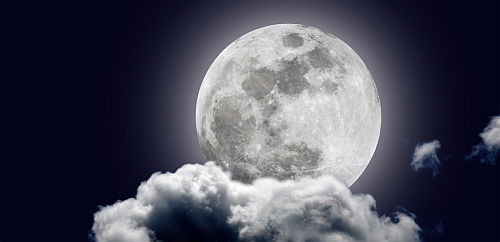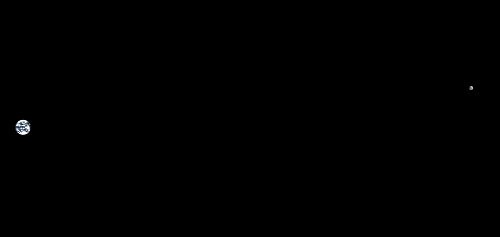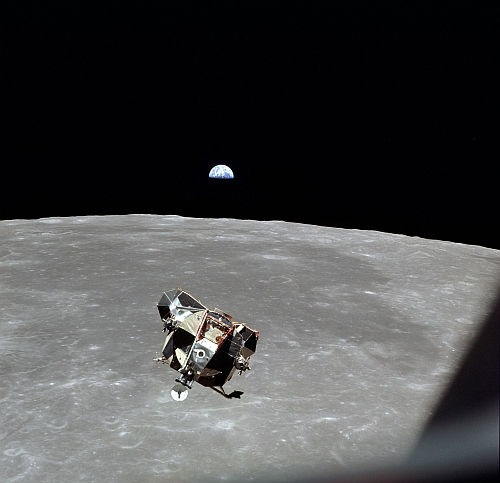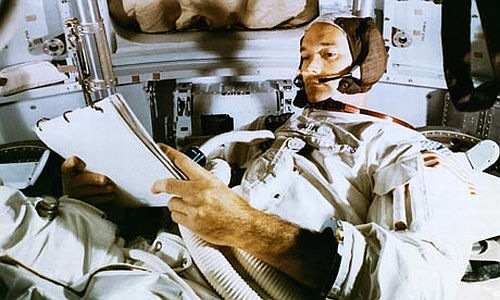The Universe in a Christmas Tree

Joy to the world! The solstice has come, bringing the ancient traditions that celebrate the season. Among those traditions, the ones that involve the Christmas tree are particularly beautiful. The Christmas tree represents a renovated eternal life, with hopes for the future. It also represents the knowledge the ancients had of the very meaning of the solstice: that it may be the longest night of the year, but it’s also the day from which the days will get longer and bring abundance to the world.
The solstice is one of the earliest and most important astronomical discoveries. Since then, we discovered a bit more about the world and the whole Universe.
How about looking at the Christmas tree through the light of this knowledge? Here is some food for thought:
- We know more planets beyond the solar system than there are Christmas balls on your tree. The current count is at 358 exoplanets, and growing;
- If the planet was shrinked to the size of a Christmas ball, it would be the smoothest ball of the tree. The Mount Everest (8 km) or the Marianas Trenchr (11km) are small imperfections relative to the planet’s 12,000 km diameter. It’s an imperfection of less than 0,01%;
- “Earth is not spherical, it’s an oblate spheroid”, some Grinch may say. Indeed, our planet wider in the equator, but even this deviation from a perfect sphere is of less than 0,04%;
- If an 8 centimeters Christmas ball represented Earth and the nearest ball represented the nearest known exoplanet – Epsilon Eridani b, 10.5 light-years away – then the distance between them should be around 630,000 km. Almost twice the actual distance from Earth to the Moon. Epsilon Eridani b is quite far from here
- Now, if the star at the top of the tree represented our Sun, 1,392,000 km in diameter, and the star at the top of your neighbor’s tree – say, 50 meters away – represented the nerest star system, Alpha Centauri at 4 light-years of distance; then the size of our Sun-star to be on the same scale it would have to be 0,74 micrometers large. From 1,4 million kilometers to more than 100 times smaller than the width of a hair, that’s how small the star should be for it to be in the same scale as the distance between it and the neighbor’s Christmas star.
It’s a very big Universe. It’s also a very old one:
- Let’s say your Christmas tree took ten years to grow. If the moment in which it was sprout was the Big Bang – 13,7 billion years ago – and the rest of its history was compressed to present day, then the Christmas tree would have known the first primates only in the last few hours, and all our recorded history would have ocurred in the last minute. Ten years growing from a seed, and all our human adventures would have been instants played in a tiny little part of this huge tree full of balls and stars. The ten year-old Christmas tree can be seen as a version of Sagan’s Cosmic Calendar.
“Astronomy is a humbling and character-building experience”, noted Carl Sagan. “It is sometimes said that scientists are unromantic, that their passion to figure out robs the world of beauty and mystery. But is it not stirring to understand how the world actually works — that white light is made of colors, that color is the way we perceive the wavelengths of light, that transparent air reflects light, that in so doing it discriminates among the waves, and that the sky is blue for the same reason that the sunset is red? It does no harm to the romance of the sunset to know a little bit about it.”
It also should do no harm to the romance of the Christmas tree to know that it’s a conifer, that conifers date from the late Carboniferous, about 300 million years ago, which means that we don’t have to use too much of our imagination to picture a Christmas tree watching the whole of human follies in an instant. In a way they literally did.
Feel dizzy? Perhaps some Christmas Chaos will help you see the infinite that can lie in a Christmas tree.
Science can lead to awe inspiring thoughts, based on the real and awe inspiring observations of the world in which we live. It’s the greatest gift we have, and our greatest hope for the future.
Happy holidays!
by Kentaro Mori, original text at 100nexos
[top image from dyet]
A pixel, from Earth to the Moon, to the infinite and beyond
This is a translated version of this post, written originally in Portuguese by Kentaro Mori at 100nexos and translated by Carlos Hotta.
==============================================

Can you imagine a 1.700 km rock about 400.000 km from Earth? It is really hard for us to picture that. This rock, however, is our Moon. It is really difficult to grasp the Moon’s distance and dimensions, specially because our senses fool us. Try to represent with your hands, or even your arms, the size of the Moon in the sky. If you did that, you probably made a circle that is much larger than the one you see in the sky.
The angular size of the Moon is only half of a degree. If you extend your arm in front of you with your thumb pointing up, its width is about two degrees. That is right: if you extend your thumb towards the the Moon, you can cover it about four times. Even thought the Moon is 1.700 km. Go on and check yourself! ALmost everyone of us will overestimate the size of the Moon in the sky. Some of us will even use their arms when estimating it! This is called the Moon illusion. And this is why the Moon looks so tiny when we take a picture of it: cameras do not lie but our brains do.
We have been observing the sky above us for thousands and thousands of years. We have understood the celestial mechanics for a few centuries. And four decades ago, humans, with no more than six degrees of separation from you and I, have landed in the Moon. There you could not cover the Moon with your thumbs (unless you put then directly in front of your eyes, an occasion when you would see little else).
There are many ways to express how fantastic it was to land in the Moon. As we are talking about distances, please have a look at the image bellow – the inspiration of this post – and join me towards the infinite — and beyond.

This image was created by Drew Olbrich, that wanted to correctly represent the scale between sizes and distances of the Earth and the Moon. We are used to see the pair represented in an artistic way, ignoring their true proportion. This is understandable, as you can see the emptiness between both bodies. This is the truth, however, the space is a great emptiness. In order to see this image in space, you would have to be approximately 560.000 km from where you are now. You may click the image to visit Olbritch’s site and check the image with higher resolution.
“This image has the most impact if you make it fill your whole screen and then turn off all the lights in the room” recommends Olbrich. “Stare at it for a while and try to imagine that you’re out in space looking back through some kind of bizarre porthole.”
Speaking of higher resolution, while I was contemplating Olbrich’s image I started thinking of what would be the size of Apollo space shuttle in the image. It would certainly be so tiny that it would be invisible to us. The next geekiest question would be: what should be the image’s minimum resolution to make the modules appear as a single pixel?

The command and service modules were about 11 meters high. The lunar module that landed in the Moon was about 6 meters high. Let’s be generous (and a bit mathematically lazy) and consider the whole set as 20 meters. If they were the size of a pixel, than the 400.000 km, or 400 million meters that separate the Earth from the Moon would occupy 20 million pixels.
20 million pixels is the equivalent of 10.147 full-HDTVs side by side if your resolution is 1980 pixels in the width. If your horizontal resolution is 1024, then you would need 10.531 HDTVs. If your screen is about 40 cm, it would be almost 4 km of screens.
Amongst all these screens, running for kilometers, a single point, a tiny pixel represents Apollo space shuttle. Everything else would be empty space. A single dust particle could accidentally cover the pixel. A dead pixel would cover it. And the three astronauts inside the shuttle would be even smaller. They would be still smaller than a pixel even if with kilometers of screens.
Now, picture yourself being inside this lone pixel.

“I am alone now, truly alone, and absolutely isolated from any known life.” wrote Michael Collins while he was orbiting the Moon alone. Neil Armstrong and Buzz Aldrin were walking in our satellite for the first time in our epic naked-primate history. Collins loneliness may not seem so great if you imagine that, even though he was far from Earth, his two friends were “just” 105 km away. However, Collins was orbiting the Moon. He was 105 km away from his two friends only when he was directly above then. But he would still be in orbit. For two revolutions, Collins was over the dark side of the Moon, where not only were Amstrong or Aldrin unseen but communication with Earth was also impossible. These were the moments he was “truly alone”.
Collins also confided in his notes that “My secret terror for the last six months has been leaving them on the Moon and returning to Earth alone”. Try to imagine being smaller than that pixel and having to go through 4 kilometers of screens. “Now I am within minutes of finding out the truth of the matter, if they fail to rise from the surface, or crash back into it, I am not going to commit suicide; I am coming home, forthwith, but I will be a marked man for life and I know it.”
Fearful words that show an unknown side of Apollo 11 mission and the “forgotten astronaut”, detailed in an excellent article from Robin McKie at the Guardian. We now know that nothing like that happened. Fortunately, all manned missions to the Moon had three passengers counting with each other.
Which reminds me of something else.
Right now we are more than 6 billion astronauts that, in the words of Buckminster Fuller, make the Spaceship Earth. We are not alone, but all we can count on is each other. And while the Earth would fill a lot of screens, our planet is not really large. And is only one.
It would be impossible to end this post without mentioning that, as well as Apollo could be represented as a pixel lost in the middle of thousands of screens, Earth itself is a small pixel at the edge of the Solar Sysrem. It is a Pale Blue Dot. Collins fears were not a sign of weakness but a sign of sanity. These are the fears we need to have when we are reminded of how “truly alone” we are and how we are “absolutel isolated from any known life” besides our own, with or without considering other intelligent life in the rest of the Galaxy.
The loneliness abyss Collins felt us the same as we feel, in our Pale Blue Dot, since the dawn of mankind in the planet. The only difference is that many of us have not realized it yet.
We must take care of our tiny pixel. And seek other pixels – going to the infinite and beyond. And perhaps finding other lfeforms, “to boldly go where no man has gone before”. Or at least seed other pixels with naked primates. It should not be the fantasy of a few scifi geeks. It should be the natural drive of the whole species.
Collins conquered the abyss and safely returned with his friends, five other missions conquered the 400.000 km, landed on the Moon and came back. We are capable of achievements that are so literal and absurdly great that we cannot even grasp it – if oly we tried.
1,000,000,000
Although it is not as large as one brazillion (which is 1 followed by as many zeros as it needs), one billion is still pretty huge.
It’s such a large number that our mammal brains have a great deal of difficulty trying to grasp the concept of 1 followed by nine zeros (for all you long-scalers out there, please note that I’m talking about a milliard — a thousand million –, not a million million, which we normal people would call a trillion).
At first glance, it may seem a bit useless or even unnecessary to understand such large amounts of zeros, but how are we suppose to comprehend the Avogadro constant, geological eras, the formation of galaxies and even Evolution otherwise?
I could tell you that 55g of iron has 600 times a million billion billion atoms until my feet hurt and that wouldn’t mean much to most people, because a number that large is exceptionally hard to visualize.
I would have the same problem if I was to discourse about the 4-billion-and-a-bit years the Earth has been around, or say that there are a billion billion planets in each galaxy (which, in turn, exist in even large numbers).
Can you imagine how long it took us to go from randomly floating chemicals to our current form as email-checking beings? I certainly cannot.
We are pretty good at understanding “ten of something”, but we lack intellectual capacity to perceive millions and billions.
That’s why we use analogies. For instance:
If you take five minutes to count to one thousand, keeping a steady pace, it will take you one hour to get to 12 thousand and you’ll reach 288 thousand at the end of 24 hours.
In one year, keeping the same rhythm, without ever stopping, you will arrive at 105 million: 365 days couting without rest or pause for breath would get you to a little bit over 10% of one billion, which would only be reached at the end of nine and a half years of incessant counting, at the pace of ten numbers every three seconds.
Or you could choose to go a number a second, if you have over 31 years to spare.
One billion minutes ago, around 100 C.E., Greek mathematician Ptolemy was being born, the wheelbarrow had just been invented in China, the last lions in the Balkan Peninsula were dying off, the Kama Sutra was starting to have its first pages written in India, bricks were the new trend in Roman housing development and, again in China, paper was though of being a pretty neat new idea.
One billion hours ago Australia was not inhabitated by humans and there was no agriculture and no domesticated animals. We were all basically living in Africa, chipping stones to slice meat off bones and fashion animal hide into early-days togas for our northbound walks into cold places. We would answer to erectus rather than sapiens and were just starting to develop language and music.
A strip of sand 10 meters long, one meter wide and 100 milimeters deep contains aproximately 800 thousand million grains of sand. 80% of a billion.
Due the curvature of Earth, It is impossible to see one billion people at the same time. That is so many people that even on the flattest land they would extend past the horizon.
The only way to fit one billion people into one’s field of view is to go up a few hundred kilometers above the surface of the planet 30-meter tree (thanks for the correction, Pierce!), from where they would look like a big blobby mass rather than separate individuals, much like what happens with our skin, which is formed by billions of individual cells.
By the way, one billion cells is equivalent to 350cm², or the skin of an adult human torso.
It is not necessary to repeat “one billion” billions of times like I did here in his article. One could also refer to it as: a thousand million, 10^9, one giga, bill, or a goddamn bucket-full.
—
By Igor Santos, original written here.






